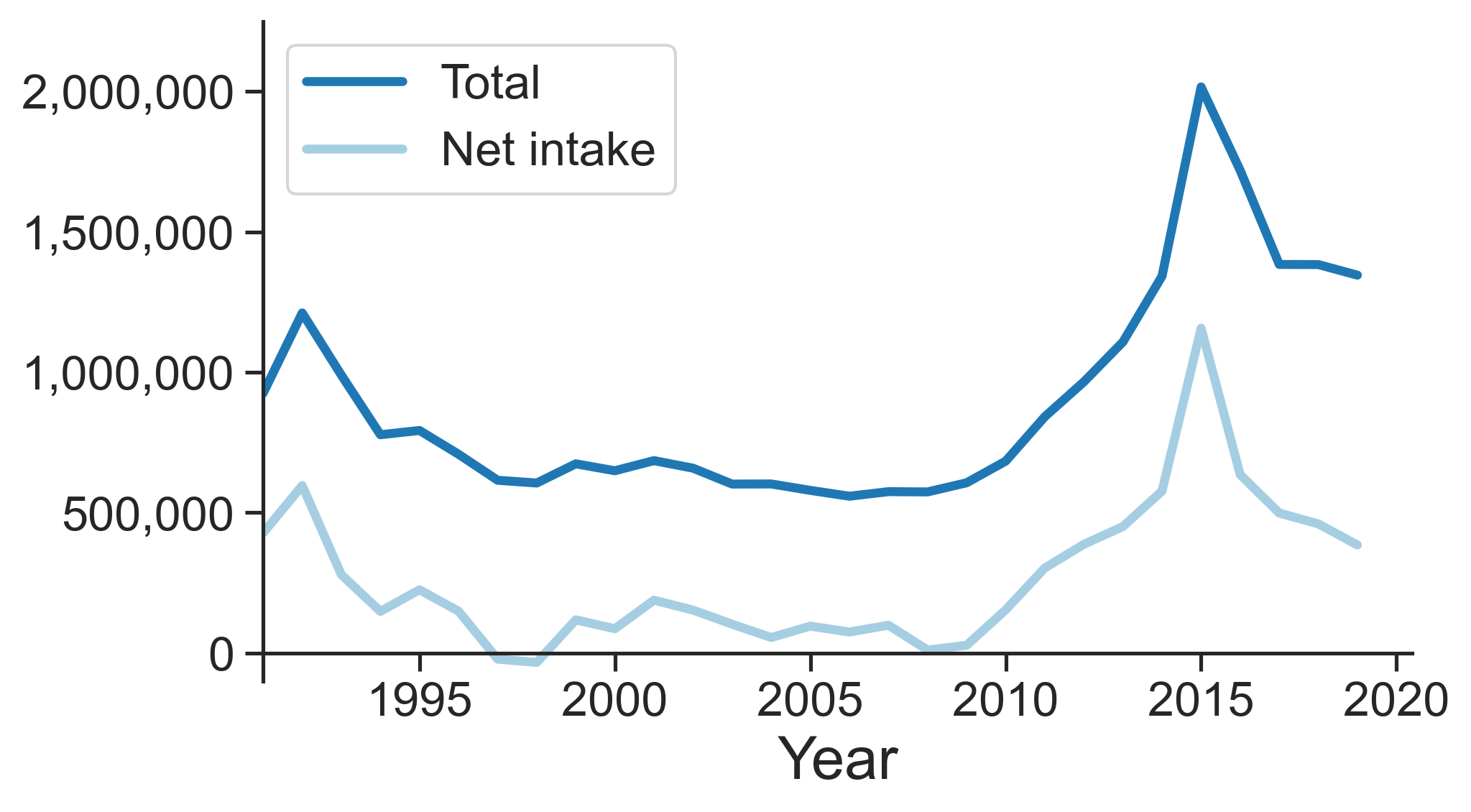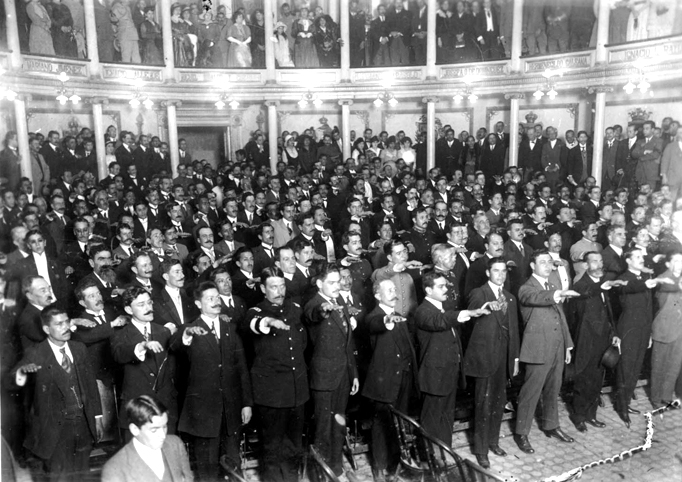|
Mexican Immigration To Germany
Mexicans in Germany refers to the Mexican population in Germany and their German-born descendants. Overview According to the Federal Statistical Office of Germany, the Mexican population is concentrated mostly in the federal states of Bavaria, Baden-Württemberg, both in southern Germany and Berlin. Substantial populations also exist in Lower Saxony and Rhineland in northwestern Germany, which is the fourth largest community of Mexicans abroad; and the second in Europe after Mexican immigration to Spain, Spain. There are currently 16 registered Mexican-German companies. Among the main activities include the realization of socio-cultural, some in coordination with embassy events, which highlight the history, lifestyle and traditions of Mexican culture and arousing interest in German public for Mexico. Mexican associations are staunch allies in case of emergency actions as natural meteors that happen in Mexico, and one of them, the Mexican-German Society AC (Deutsch-Gesellschaft eV ... [...More Info...] [...Related Items...] OR: [Wikipedia] [Google] [Baidu] |
Schleswig-Holstein
Schleswig-Holstein (; ; ; ; ; occasionally in English ''Sleswick-Holsatia'') is the Northern Germany, northernmost of the 16 states of Germany, comprising most of the historical Duchy of Holstein and the southern part of the former Duchy of Schleswig. Its capital city is Kiel; other notable cities are Lübeck and Flensburg. It covers an area of , making it the 5th smallest German federal state by area (including the city-states). Historically, the name can also refer to a larger region, containing both present-day Schleswig-Holstein and the former South Jutland County (Northern Schleswig; now part of the Region of Southern Denmark) in Denmark. Schleswig, named South Jutland at the time, was under Danish control during the Viking Age, but in the 12th century it became a duchy within Denmark due to infighting in the Danish Royal House. It bordered Holstein, which was a part of the Holy Roman Empire. Beginning in 1460, the King of Denmark ruled both Schleswig and Holstein as the ... [...More Info...] [...Related Items...] OR: [Wikipedia] [Google] [Baidu] |
Mexican Immigration To Spain
Mexican immigration to Spain refers to the Mexican population in Spain and their Spanish-born descendants. The Mexicans living in Spain are composed primarily of students, skilled professionals, spouses of Spaniards, as well as Mexican citizens who also have Spanish nationality. In December 2008, the National Statistics Institute in Spain had 14,399 registered Mexicans within its territory, of which 7,210 hold other nationalities of the European Union or are family members of EU citizens. To this number must be added those with dual nationality, who are not in Spanish records as foreigners. Mexican and Spanish laws allow dual citizenship, and many Mexicans who have asked for it, whether they are residents in Spain as grandchildren or they are children of Spanish migrants to Mexico. In 2010, the Ministry of Foreign Affairs of Mexico recorded 21,107 Mexicans living in Spain, who became the third largest Mexican community residing abroad, after the Mexican American, United States and M ... [...More Info...] [...Related Items...] OR: [Wikipedia] [Google] [Baidu] |
Ethnic Groups In Germany
The demography of Germany is monitored by the ''Statistisches Bundesamt'' (Federal Statistical Office of Germany). According to the most recent data, Germany's population is 83,456,045 (31 December 2023) making it the most populous country in the European Union and the nineteenth-most populous country in the world. The total fertility rate was rated at 1.38 in 2023, significantly below the replacement rate of 2.1. For a long time Germany had one of the world's lowest fertility rates of around 1.3 to 1.4. Due to the low birth rate Germany has recorded more deaths than births every year since 1972, which means 2024 was the 53th consecutive year the German population would have decreased without immigration. However, due to immigration the population has actually increased during the last half-century. In 2023 the number of people with a foreign background was 29.7%; this category includes foreigners, naturalized citizens, ethnic Spätaussiedler, German repatriates from Eastern E ... [...More Info...] [...Related Items...] OR: [Wikipedia] [Google] [Baidu] |
Immigration To Germany
Immigration to Germany, both in the country's modern borders and the many political entities that preceded it, has occurred throughout the country's history. Today, Germany is one of the most popular destinations for immigrants in the world, with well over 1 million people moving there each year since 2013. As of 2024, around List of sovereign states by immigrant and emigrant population, 16.8 million people living in Germany, or about 20% of the population, are Immigrant generations, first-generation immigrants, while the population share with a Migration background, migrant background in the wider sense was almost 30%. Even before Germany's formal Unification of Germany, founding in 1871, its predecessor states, such as the Holy Roman Empire and the German Confederation, were common destinations for the persecuted or migrant workers. Early examples include Protestants seeking religious freedom and refugees from the partitions of Poland. Jewish migrants, mostly from Eastern Europ ... [...More Info...] [...Related Items...] OR: [Wikipedia] [Google] [Baidu] |
Germany–Mexico Relations
The nations of Germany and Mexico first established formal diplomatic relations in 1879, following the unification of Germany. In 1917, the German Empire proposed a World War I alliance with Mexico against the United States in the Zimmermann Telegram before it was foiled by British intelligence agents. The two nations were twice on the opposite sides of 20th century conflicts: first in the Spanish Civil War from 1936 to 1939, and later during World War II from 1942 to 1945. Mexico established relations with both halves of partitioned Germany in 1952 and maintained the relationship through the German reunification in 1990. Both nations are members of the G-20 major economies, Organisation for Economic Co-operation and Development and the United Nations. History 19th century German clergy and technical mining personnel arrived in colonial Mexico in the late eighteenth and early nineteenth centuries. One of the first contacts between Germany and Mexico was via the scientific ... [...More Info...] [...Related Items...] OR: [Wikipedia] [Google] [Baidu] |
German Mexicans
German Mexicans are Mexicans, Mexican citizens of Germans, German origin. Most documented ethnic Germans arrived in Mexico during the mid-to-late 19th century and were spurred by government policies of Porfirio Díaz. Many of them took advantage of the liberal policies in Mexico at the time and went into merchant, industrial, and educational ventures. However, others arrived without any or much capital as employees or farmers. Most settled in Mexico City and the surrounding states of Puebla and Veracruz as well as the northern states of Sonora, Sinaloa, Jalisco, and Chihuahua. Later settlers headed south towards the Yucatán Peninsula. Significant numbers of German immigrants also arrived during and after both World War I, World World War II, Wars. The historic strength of German-Mexican relations has contributed to Mexico having the fourth largest German diaspora, German population in all Latin America behind Brazil, Argentina and Chile. The German influence on modern Mexican c ... [...More Info...] [...Related Items...] OR: [Wikipedia] [Google] [Baidu] |
Munich (11)
Munich is the capital and most populous city of Bavaria, Germany. As of 30 November 2024, its population was 1,604,384, making it the third-largest city in Germany after Berlin and Hamburg. Munich is the largest city in Germany that is not a state of its own. It ranks as the 11th-largest city in the European Union. The metropolitan area has around 3 million inhabitants, and the broader Munich Metropolitan Region is home to about 6.2 million people. It is the List of EU metropolitan regions by GDP#2021 ranking of top four German metropolitan regions, third largest metropolitan region by GDP in the European Union. Munich is located on the river Isar north of the Alps. It is the seat of the Upper Bavaria, Upper Bavarian administrative region. With 4,500 people per km2, Munich is Germany's most densely populated municipality. It is also the second-largest city in the Bavarian language, Bavarian dialect area after Vienna. The first record of Munich dates to 1158. The city ha ... [...More Info...] [...Related Items...] OR: [Wikipedia] [Google] [Baidu] |
Mexican People
Mexicans () are the citizens and nationals of the Mexico, United Mexican States. The Mexican people have varied origins with the most spoken language being Spanish language, Spanish, but many also speak languages from 68 different Languages of Mexico, Indigenous linguistic groups and other languages brought to Mexico by expatriates or recent immigration. In 2020, 19.4% of Mexico's population identified as Indigenous peoples of Mexico, Indigenous. There are currently about 12 million Mexican nationals residing outside Mexico, with about 11.7 million living in the United States. The larger Mexican diaspora can also include individuals that trace ancestry to Mexico and self-concept, self-identify as Mexican but are not necessarily Mexican citizenship, Mexican by citizenship. The United States has the largest Mexican population in the world after Mexico at 10,918,205 in 2021. The modern nation of Mexico achieved independence from the Spanish Empire in 1821, after a decade-long war ... [...More Info...] [...Related Items...] OR: [Wikipedia] [Google] [Baidu] |
Cuban People
Cubans () are the citizens and nationals of Cuba. The Cuban people have varied origins with the most spoken language being Spanish. The larger Cuban diaspora includes individuals that trace ancestry to Cuba and self-identify as Cuban but are not necessarily Cuban by citizenship. The United States has the largest Cuban population in the world after Cuba. The modern nation of Cuba, located in the Caribbean, emerged as an independent country following the Spanish-American War of 1898, which led to the end of Spanish colonial rule. The subsequent period of American influence, culminating in the formal independence of Cuba in 1902, initiated a complex process of national identity formation. This identity is characterized by a blend of Indigenous Taíno, African, and Spanish cultural elements, reflecting a unique multicultural heritage. The Cuban Revolution of 1959, which brought Fidel Castro to power, marked a significant turning point as it transformed the political landscap ... [...More Info...] [...Related Items...] OR: [Wikipedia] [Google] [Baidu] |
Colombian People
Colombians () are people identified with the country of Colombia. This connection may be residential, legal, historical or cultural. For most Colombians, several (or all) of these connections exist and are collectively the source of their being ''Colombian''. Colombia is considered to be one of the most multiethnic societies in the world, home to people of various ethnic, religious and national origins. Many Colombians have varying degrees of European, Indigenous and African ancestry. The majority of the Colombian population is Mestizo, being descendants of Indigenous peoples and Europeans, especially Iberians. Following the initial period of Spanish conquest and immigration, different waves of immigration and settlement of Nonindigenous peoples took place over the course of nearly six centuries and continue today. Elements of Native American and more recent immigrant customs, languages and religions have combined to form the culture of Colombia and thus a modern Colombi ... [...More Info...] [...Related Items...] OR: [Wikipedia] [Google] [Baidu] |
Unification Of Germany
The unification of Germany (, ) was a process of building the first nation-state for Germans with federalism, federal features based on the concept of Lesser Germany (one without Habsburgs' multi-ethnic Austria or its German-speaking part). It commenced on 18 August 1866 with the adoption of the North German Confederation Treaty establishing the North German Confederation, initially a military alliance ''de facto'' dominated by the Kingdom of Prussia which was subsequently deepened through adoption of the North German Constitution. The process symbolically concluded when most of the south German states joined the North German Confederation with the ceremonial proclamation of the German Empire (German Reich) having States of the German Empire, 25 member states and led by the Kingdom of Prussia of Hohenzollerns on 18 January 1871; the event was typically celebrated as the date of the German Empire's foundation, although the legally meaningful events relevant to the completion of ... [...More Info...] [...Related Items...] OR: [Wikipedia] [Google] [Baidu] |










